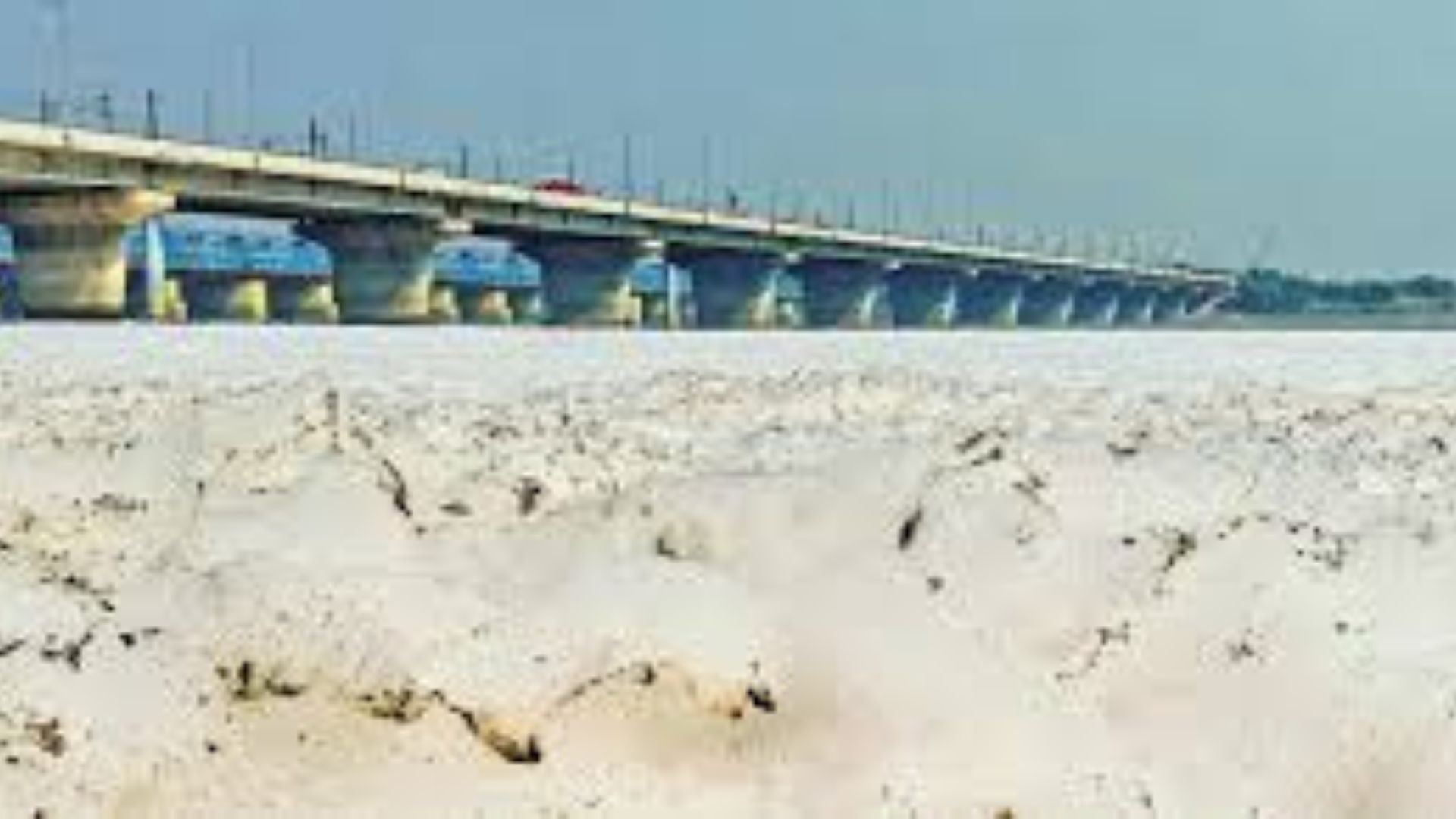Political tensions rise over Yamuna’s toxic pollution, raising health concerns for devotees in Delhi.
New Delhi: As the Chhath festival approaches, political debate in Delhi is increasingly centred on the issue of toxic water in the Yamuna River. The Yamuna, a primary site for the festival’s rituals in the capital, has been plagued by pollution, with water quality declining due to untreated sewage, industrial waste, and severe toxic foaming. The Aam Aadmi Party (AAP)-led Delhi government has highlighted its efforts to reduce pollution in Yamuna through cleaning initiatives and upgrades to sewage treatment facilities. However, political opponents argue that these actions are inadequate and have not effectively tackled the ongoing pollution in the river, especially during a festival that attracts thousands of participants. Chhath is an important festival for North Indians, particularly for Purvanchalis, those from Bihar and eastern Uttar Pradesh. The festival involves offering prayers to the Sun God by standing in water bodies, making the state of the Yamuna River a critical concern for devotees in Delhi.
The issue of toxic water in the Yamuna River has now become a major political flashpoint, with opposition parties challenging the Delhi government’s efforts to clean the river and provide safe water for worshippers during Chhath.
Bharatiya Janata Party (BJP) National Spokesperson Shehzad Poonawala addressed the media, stating, “The Yamuna River’s water has become poisonous. Arvind Kejriwal had promised to clean the Yamuna by 2025, but can you imagine the diseases people may contract while celebrating Chhath in this water? The AAP-led Delhi government has diverted funds intended for cleaning the river into advertisements. They will likely blame Uttar Pradesh and Haryana for the current state of the river. This ‘poisonous politics’ is behind Delhi’s toxic air and water.”
During his visit to the Yamuna, Poonawala collected a water sample, pointing out, “The Yamuna’s water should have a BOD level of 5 mg per litre, but it’s at 93 mg per litre. This isn’t water anymore; it’s poison. The 22-km stretch from Wazirabad to Okhla, which is only 1-2% of the river’s total length, contributes 80% of its pollution. AAP leaders like Atishi Marlena blame UP and its residents, yet the river flows from Haryana to Delhi and then to UP.”
Previously, Delhi BJP President Virendra Sachdeva also criticised the AAP government for its lack of action on Yamuna’s pollution. To demonstrate the river’s condition under AAP’s administration, Sachdeva took a dip in the Yamuna, after which he fell ill and required hospitalisation. He questioned how Delhi residents could safely celebrate Chhath in such deteriorated water conditions.
Even Congress has joined BJP in criticising the AAP-led Delhi government for the worsening condition of the Yamuna River, especially with the Chhath festival approaching. During his visit to inspect the Yamuna ghat at ITO, Delhi Congress President Devender Yadav said that the AAP government has “failed miserably” to fulfil its promise to clean the Yamuna. He noted that the river is once again filled with toxic foam just days before Chhath Puja, and the AAP government has no answers.
“I was disturbed to see the dirt and garbage choking the lake and the Yamuna, as lakhs of devotees will be performing Chhath Puja in the polluted waters. The AAP government has done nothing to clean these water bodies except make hollow statements and engage in blame games,” Yadav added.
Yadav further criticised AAP’s repeated promises to clean the Yamuna, pointing out that the pollution in the river and other water bodies in the capital worsens each year around Chhath. He recalled that in November 2015, shortly after coming to power, Kejriwal performed an aarti at the Yamuna and vowed to revive the river within five years. Later, he promised he would take a dip in the Yamuna by Chhath Puja in 2025. However, ten years later, the river remains severely polluted, making it unsafe for people to go near the water. Yadav referenced the recent case of Sachdeva, who fell ill and was hospitalised after taking a dip in the Yamuna at the ITO Ghat, illustrating the river’s dangerously toxic state.
Meanwhile, Vinay Mishra, Vice Chairman of the Delhi Jal Board (DJB), assured that the Delhi government is committed to resolving these issues. He emphasised that Chhath Puja is a significant festival, and the government provides tents, sound systems, and all essential facilities at the ghats each year.
“This year too, we will ensure proper arrangements on the Yamuna,” he stated.
Addressing concerns about pollution in the Yamuna, Mishra claimed that the froth in the river originated on the Haryana side.
“When BJP leaders took a dip in the Yamuna, there was no froth visible. This is just propaganda. Industrial waste from Haryana has raised ammonia levels in the river. Each year, from October 12 to 31, the Ganga Canal is closed for maintenance, forcing us to rely on Yamuna water for our treatment plants. High ammonia levels, however, have impacted our plant operations. After inspecting the Sonia Vihar Water Treatment Plant, I found ammonia levels at 0.9 ppm, which is hazardous. I have urged CM Atishi to request Haryana to stop discharging industrial waste into the Yamuna to ensure clean water for Delhi residents.”

